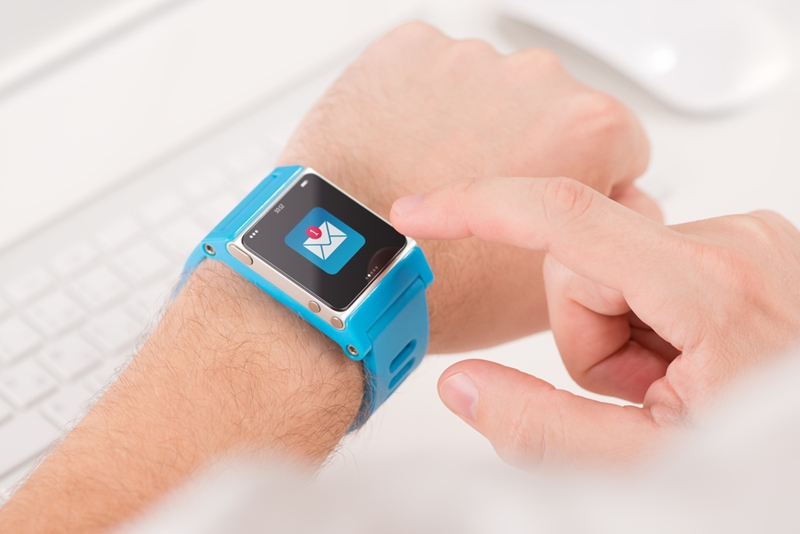We've talked about how mobile is now on the up-and-up, and what this will mean for businesses, but there's another technology that companies across the globe need to pay attention to – wearables.
This is taking technology and downsizing it into a wristwatch or a pair of glasses – allowing people to access information without even needing to pull out a smartphone. There's a good chance this technology will grow over the next few years in the consumer space, but what about businesses?
It's time to step into a world that's only been seen in sci-fi movies: the world of wearable technology.
What is a wearable?
Wearable technology is any piece of electronic technology worn on the body – whether in the form of a watch with a screen, glasses that project images in front of a user or even built into clothing.
These devices commonly communicate with the internet or a smartphone, delivering useful information to the wearer. A smartwatch, for example, will show the wearer emails as they come through, alerts if a message or phone call has been received and even route directions when driving or catching a train.
 Smartwatches will make everyday tasks far easier.
Smartwatches will make everyday tasks far easier.The core functionality is that there's no need to pull out a smartphone – all information is available at a glance in an easily accessible location. Consumers are certainly showing an interest in the devices, as evidenced by the substantial Apple Watch supply shortage, but what use is there for companies?
How will these impact businesses?
Remember when smartphones were first starting to become a thing? How much utility did they put in the hands of your staff members? We're about to see this yet again – although not exactly in the hands of staff.
Wearables mean construction site managers will be able to see plans and the locations of other workers through augmented reality glasses, and gain real-time overviews of construction sites by accessing cameras. What's more, they'll be able to do so without dropping what they're doing.
Salesmen can use smartwatches to have information subtlety delivered to them during meetings, whether reminders or cues to discuss certain topics. No longer will they need to pull out a phone.
Even more advanced wearables like the HoloLens from Microsoft will enable architects and engineers to visualise models of buildings and machinery directly in front of them, and walk around the designs, changing aspects as they see fit through simple gestures.
Unlike the traditional mobile technologies we're used to, there's really no limit to what is possible with wearables – and CIOs agree.
A new report from Robert Half has found that 81 per cent of chief information officers believe wearable computing devices will become common workplace tools, with the majority predicting this will happen in the next five years.
"Emerging technologies such as wearables may help drive enterprise mobility and create a need for IT expertise to support their adoption at work," explained John Reed, the senior executive director of Robert Half Technology.
With the predicted increase in technology usage, businesses will need to think about IT security. After all, with nearly every new technology comes a bevvy of security risks, such as information loss when a device is stolen, or potential cyber threats.
Security concerns have been apparent with the introduction of nearly every new technology, whether PCs or smartphones. Now, the same risks apply for wearables, but businesses have the advantage of foresight. With preparation, there's no need for security to become an issue.
With nearly every new technology comes a bevvy of security risks
If you want to get your staff on the right footing when wearables start to roll around, you may want to consider training with an IT framework.
This type of specialist education helps employees to grasp difficult concepts, and then utilise them for the benefit of the business. As a bonus, companies also get to invest in their employees, helping to create a more engaged workforce.
The world we've seen in sci-fi movies is fast approaching – and there's no denying that prepared businesses will be in the best position to succeed.

